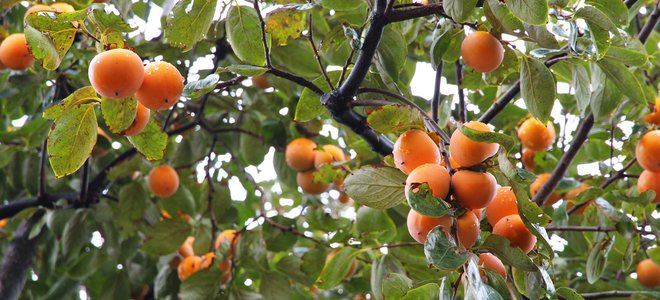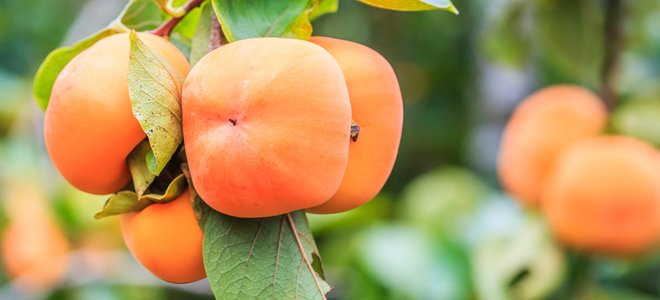
Persimmon trees may just be perfect. They produce sweet, tasty fruit, their wood is dense, making it both useful and valuable, and their lovely canopies cast plenty of shade. Best of all, caring for these hardy trees is easy once they’re established.
Can You Grow a Persimmon Tree?
The American persimmon tree grows well in the U.S. but it can’t necessarily thrive everywhere in the U.S. This tree is able to grow in hardiness zones 4 through 9, which covers most of the continental states. Extreme northern climates and extreme southern climates are a little too harsh for the permission tree. That said, this is one tough tree. The persimmon tree can withstand temperatures as low as negative 25 degrees F. If you give this tree a sunny spot to grow in with well-draining soil, it should thrive. The tree will be pretty in your yard and produce edible fruits for you to enjoy. It has lovely foliage in the fall and grows pretty large, so it produces cooling shade for your garden.

Maintenance and Care
Persimmon trees are pretty to look at and they create very sweet fruits. However, this is by no means a delicate tree. This tree doesn’t really need much. Make sure it’s getting water and water young trees regularly until they take hold and begin to grow well. Otherwise, water your trees when there hasn’t been enough rain to keep them hydrated. If you notice the leaves yellowing or see that the soil around the tree is very hard and dry, give it some water to help it perk back up. You don’t have to get out there and check the tree every day. For the most part, this tree will do fine on its own and only needs a little help during exceptional circumstances. You don’t need to fertilize healthy persimmon trees. Unless the tree looks a little weak or sickly, you can pretty much just leave it alone. Persimmon trees don’t really need much pruning, either. You should make a few structural cuts to encourage more fruit growth but mostly, this plant doesn’t need a lot of attention. That means basically, all you have to do is enjoy this plant.Persimmon trees are highly resistant to both disease and pests, so there is very little that can happen to damage this tree once it’s established and growing. They can also be highly drought-tolerant. But whenever possible, you should water your tree in times of low or no rain.

Producing Fruit
The trickiest part of owning any fruit tree is getting it to actually produce fruit. Asian persimmon trees, which aren’t quite as hardy as American persimmon trees, are self-fruiting. American persimmon trees, on the other hand, require both male and female varieties to produce fruit. Persimmon fruits ripen in the fall. They will begin to ripen in September in most regions and will continue to ripen through the fall. Astringent persimmon fruit has a very soft, jelly-like texture when it’s ripe. Non-astringent fruit is firm. TO east astringent fruit, place it in the freezer overnight. Persimmon fruit is a good source of potassium and fiber, as well as Vitamins A and C. The fruits have a taste that is similar to apricots and they can be used in baking or enjoyed as a hand fruit. They’re great in a fruit salad. Once you have your own persimmon tree, you’ll find lots of ways to enjoy this fruit and to use it in meals and baking. These low-maintenance trees can add a lot to your yard, too. They look good and they can be a selling point for homebuyers. There’s really no way to go wrong with a persimmon tree.
Source link : https://www.doityourself.com/stry/caring-for-a-persimmon-tree












